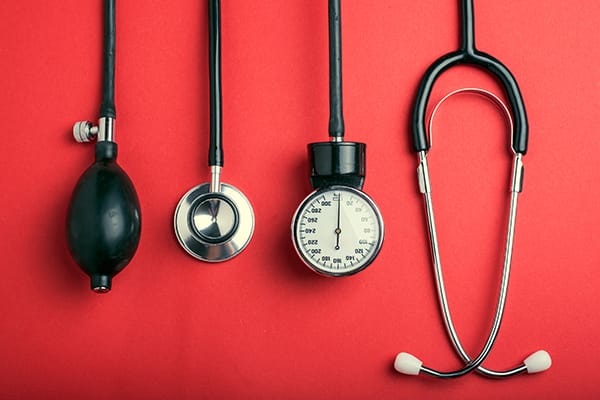According to the American Heart Association and the American College of Cardiology, there are new standards for blood pressure readings. Previously, high blood pressure, also known as hypertension, qualified as 140/90 and higher. The new standard reading for hypertension is 130/80. As a result of this announcement in 2017, the number of adults in the U.S. with high blood pressure increased from 72.2 million people to 103.3 million people.
Your blood pressure reading measures the pressure of your blood pushing up against your artery walls. There are two numbers included in a blood pressure reading:
- Systolic blood pressure: this is the top number on your blood pressure reading. It measures pressure when your heart is beating.
- Diastolic blood pressure: this is the bottom number. It measures pressure when your heart is resting, this occurs in between beats.
Systolic blood pressure usually has a greater emphasis because of its risk for cardiovascular disease. With age, arteries become stiffer due to a long, gradual buildup of plaque, causing the pressure of your blood during a heartbeat to rise. That being said, both numbers in the reading are important.
Here are the new standards for measuring blood pressure:
| Blood Pressure Category | Systolic (mmHg) | Diastolic (mmHg) | What does this mean? |
|---|---|---|---|
| Normal | <120 | <80 | 120/80 is the optimal blood pressure. Continue to eat healthy and exercise. |
| Elevated | 120-129 | <80 | Take precautionary steps — such as eating heart healthy foods and incorporating exercise — to avoid developing high blood pressure. |
| High blood pressure (Hypertension) Stage 1 | 130-139 | 80-89 | Consult your doctor. They will advise healthy lifestyle changes and probably medication. |
| High blood pressure (Hypertension) Stage 2 | >140 | >90 | Consult your doctor. It is likely you will receive a few medications as well as strong advisory of lifestyle changes. |
| Hypertensive crisis | >180 | >120 | Consult your doctor immediately. This can lead to serious organ damage. If you are experiencing chest pain, loss of breath, back pain, weakness, foggy vision, or difficulty speaking, call 911. |
The new standards erase the prehypertension stage, which is replaced with Hypertension Stages 1 & 2. The idea is that those who were once “prehypertension” will begin to focus on making healthy changes to their lifestyle before hypertensive crisis, or worse.
Hypertension is a serious risk factor for heart attack, stroke, or kidney failure, and should be treated as such — serious. If you’re worried about your blood pressure or have questions, consult your physician.
High blood pressure can also impact the amount of pressure put on your veins to help pump blood through your body and maintain circulation. That’s why it’s important to maintain good vein health as you try to lower your high blood pressure. Fill out our vein assessment form to tackle both issues at once and get started on the path toward better vein health.
Visit The Iowa Clinic Cardiology Department or call 515.875.9090 with any questions.
Understanding Blood Pressure Readings. American Heart Association.
Measuring Blood Pressure. Centers for Disease Control and Prevention (CDC).
